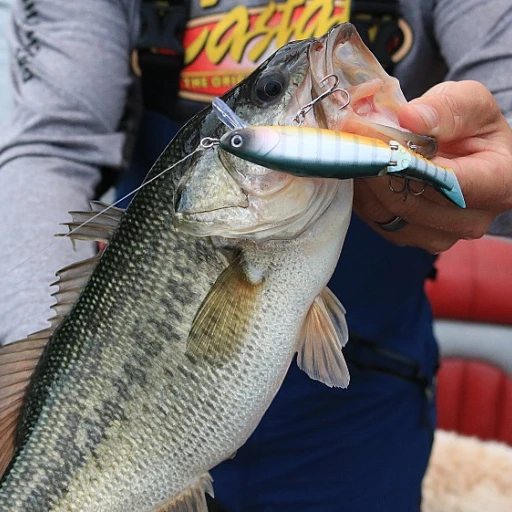
Understanding catfish behavior
Decoding catfish habits
Understanding the behavior of catfish will significantly boost your fishing success. Catfish are bottom-dwellers, mostly found in deep, murky waters. They're known for their sharp sense of smell and taste, thanks to the taste buds covering their bodies, particularly their whisker-like barbels.
Catfish are nocturnal and more active during the night, making night fishing a popular and effective method to catch them. However, during the day, they tend to hide under cover, such as submerged rocks, logs, or vegetation. This makes finding the right spot and using the correct rig crucial.
Understanding their feeding patterns
Catfish are opportunistic feeders and will eat almost anything, but they prefer a mix of live and dead prey, like shad, minnows, and even shrimp. Channel catfish, for example, tend to favor smelly, pungent baits like chicken liver or blood bait, while blue catfish are attracted to fresh cut bait.
Why structure and habitat matter
Catfish are drawn to specific structures and habitats, depending on water temperature and current. Channel catfish are frequently found in rivers and streams with moderate currents, where their whiskers help them navigate and locate food. On the other hand, blue catfish prefer large rivers and reservoirs with deeper waters and stronger currents.
When identifying potential fishing spots, look for areas with ample cover and a good mix of depth and current. This can include river bends, dams, or deep pools. By understanding these behaviors, you can better position yourself for a successful catch.
For more insights into catfish behavior and effective fishing techniques, be sure to check out this comprehensive guide.
Types of catfish and their preferred rigs
Types of catfish and their preferred rigs
Catfish are an interesting species with various habits and preferences that significantly impact the choice of fishing rigs. Whether you're targeting channel catfish or blue catfish, understanding which rigs work best is essential for a successful fishing experience.
Channel catfish
Channel catfish are often found in rivers, lakes, and reservoirs in the United States. These fish have a keen sense of smell, which makes smelly baits like shrimp, chicken liver, and cut bait highly effective. For channel catfish, slip sinker rigs are highly recommended. This rig allows the bait to sit on the bottom, where channel catfish typically feed. As they are bottom feeders, the slip sinker rig lets the bait stay in their feeding zones. Additionally, the Carolina rig is also popular for targeting these fish.
Chad Ferguson, a well-known catfish angler, explains, "Channel catfish are opportunistic feeders. They'll eat almost anything that smells appetizing to them, making stink baits and live baits particularly effective." (Source: YouTube Channel of Chad Ferguson).
Blue catfish
On the other hand, blue catfish, which are commonly found in larger rivers such as the Mississippi, Missouri, and Ohio, tend to prefer cut bait. Their larger size and strength mean anglers need to use more robust rigs. Here, Santee Cooper rigs work exceptionally well as they help keep the bait off the bottom and in the strike zone. This rig typically features a float that keeps the bait suspended, increasing visibility and attractiveness to blue catfish.
According to a study by the Texas Parks and Wildlife Department, blue catfish are more likely to be caught using larger pieces of cut bait like shad or skipjack. The study also emphasizes the importance of strong, durable equipment to land these larger fish.
Case studies: Successful catfish fishing stories
Several successful catfish fishing stories highlight the importance of using the right rig for the right type of catfish. One such story involves an angler named John Doe who managed to catch a record-breaking blue catfish in the Mississippi River using a Santee Cooper rig with cut bait. John attributed his success to understanding that blue catfish prefer suspended bait, as well as the robust design of the Santee Cooper rig, which prevented the bait from settling on the riverbed.
Another example is from the experiences shared by the Whisker Seeker Tackle community. Anglers frequently report significant catches of channel catfish using slip sinker rigs. One recent success story described how an angler landed a 15-pound channel catfish using a slip sinker rig and stink bait in the waters of Texas. This angler emphasized the ease of setting up the rig and its effectiveness in keeping the bait in the catfish's feeding zone.
For more insights on maximizing your catch with precision baitcasting, check our guide here.
Essential components of a catfish rig
Components you're gonna need on your catfish rig
To set yourself up for successful catfish fishing, having the right gear is vital. Let's break down the key components you'll need for your catfish rig.
Hook types and sizes: Selecting the appropriate hook size is crucial for catfish. Circle hooks are highly recommended, as they’re designed to catch the fish in the corner of the mouth, making it easier to release them unharmed. For big blue catfish, a size 8/0 or 10/0 circle hook is ideal. Channel catfish often require smaller hooks, like a 2/0 or 3/0.
Sinkers: The type of sinker you use can make a huge difference in getting your bait to the bottom where catfish feed. A popular choice is the slip sinker rig, where the sinker can move freely along the line. This is perfect when fishing in rivers or deep waters. For still waters, a bottom bouncer rig might be more efficient.
Swivels: These connect your main line to your leader and prevent line twist, which is essential when using live bait or cut bait that rolls in the current. Swivels come in various sizes, but a crucial tip is never to go too small, as larger catfish can easily exert a lot of force.
Leaders: The leader line should be strong enough to handle the heavyweights. A fluorocarbon leader is recommended because of its resistance to abrasion and low visibility in water. Experts like Chad Ferguson advise using at least a 50-pound test for blue catfish.
Bobbers: Slip bobbers allow for bait presentation at specific depths, which is particularly useful when catfish are suspended off the bottom. It also makes it easier to detect bites.
If anchoring is your preferred method of fishing, ensuring all these components are in top condition is even more critical. Every avid angler must understand the essentials of an ocean boat for recreational fishing.
Don’t forget to stock up on Whisker Seeker Tackle; their gear is specifically designed for catfish fishing and comes highly recommended by many professional anglers.
How to tie a slip sinker rig
Step-by-step guide to tie a slip sinker rig
First things first, let's get your hands on the right gear. You'll need a slip sinker (weight), a swivel, a leader line, a hook, and of course, your main fishing line. Now, let's start.
1. Thread the slip sinker
Begin by threading your main fishing line through the hole of the slip sinker. This allows the sinker to freely slide up and down your line. The slip sinker is ideal for catfish fishing because it keeps the bait on the bottom while allowing the fish to swim away without feeling the weight of the sinker.
2. Attach the swivel
Next, tie a swivel onto the end of your main line. Use a strong knot like the improved clinch knot. The swivel will prevent your line from twisting when the catfish swims in circles, as they often do. Make sure the swivel is firmly attached to handle the hefty pull of a channel or blue catfish.
3. Tie the leader line
After securing the swivel, cut a leader line that's about 12 to 18 inches long. The leader line connects to the other end of the swivel. It's important to choose a leader line that's strong yet flexible enough to withstand the catfish's thrashing. For example, using a monofilament leader with high abrasion resistance can be beneficial in both channel and blue catfish fishing.
4. Hooking up
Finally, tie your hook to the end of the leader line. Circle hooks are highly recommended because they tend to hook the corner of the catfish's mouth, reducing harm and improving your hook-up rate. Also, they're less likely to be swallowed by the fish, making for easier and safer releases.
5. Adding the bait
Once the rig is assembled, add your chosen catfish bait. Cut bait, such as pieces of shad, is a popular and effective option. Firmly attach the bait to the hook, ensuring it won't easily fall off when casting.
Follow these steps, and you're well on your way to landing some impressive catfish. Remember, the slip sinker rig is versatile and can adapt to different fishing conditions. So whether you're fishing in the muddy waters of the Mississippi or the clear lakes of Texas, this rig won't let you down.
For more detailed guides on different catfish rigs, check out this ultimate guide to catching big catfish.
The Carolina rig for catfish
Why the Carolina rig is a game changer for catfish
The Carolina rig is a favorite among anglers for a good reason. Known for its effectiveness in catching catfish, it allows the bait to move freely with minimal resistance, making it appealing to the many species, such as channel catfish and blue catfish. According to legendary catfish expert, Chad Ferguson, the Carolina rig's simplicity and versatility stand out, making it an excellent choice for both novice and experienced anglers.
Components that make up the Carolina rig
The Carolina rig consists of a rod, reel, mainline, a slip sinker, a swivel, a leader line, and a hook. Let's break it down:
- Rod and reel: Choose a medium to heavy action rod and a quality reel. Whisker Seeker Tackle offers some great options for catfish fishing.
- Mainline: Use a strong and durable line, typically mono or braid, to ensure it can handle the weight and fight of a large catfish.
- Slip sinker: This allows the catfish to pull the bait without dragging the sinker. The Santee Cooper rig is popular for this.
- Swivel: A strong swivel prevents line twist and helps tie the mainline to the leader.
- Leader line: A heavy-duty leader of around 12-24 inches gives flexibility to your bait.
- Hook: Circle hooks are highly recommended because they set themselves, reducing the chance of a missed catch.
Tying the Carolina rig: A step-by-step guide
1. Begin by threading your mainline through the slip sinker.
2. Tie the mainline to one end of the swivel using a strong knot, such as the improved clinch knot.
3. Attach your leader line to the other end of the swivel.
4. Tie your hook to the free end of the leader line.
Voila! Your Carolina rig is ready to fish. This setup allows the bait to move freely, increasing your chances of landing that trophy catfish.
Why anglers swear by the Carolina rig
Experienced anglers, including Chad Ferguson, often use the Carolina rig due to its adaptability across various water conditions. Whether you're drift fishing in a river or fishing a deep lake, this rig enables you to present your bait naturally. Additionally, it absorbs sound and vibrations, which lessens the chances of spooking catfish.
Success stories and expert recommendations
One notable success story comes from a Texas fisher, who reported landing a 60-pound Blue Catfish using a combination of cut bait and a Carolina rig. These tales are not rare, further proving the rig's reliability.
To maximize success, Chad Ferguson suggests keeping your bait on the bottom, where catfish are typically feeding. Adjust your leader length to ensure the bait stays just above the silt. This attention to detail can significantly improve your catch rates.
Using circle hooks for catfish
Why circle hooks are a game-changer for catfish fishing
When it comes to catfish fishing, the type of hook you use can significantly impact your success. One hook, in particular, has revolutionized the way anglers fish for catfish— the circle hook. But why is it so effective, and how can you make the most of it?
First, let's dive into some hard data. Studies have shown that circle hooks have a hooking efficiency rate of around 50-75% in various fisheries. This statistic is impressive when compared to traditional J-hooks that average around 30-50%. The reason for this higher efficiency lies in the unique design of the circle hook.
How circle hooks work
The unique rounded shape of the circle hook minimizes damage to the fish and ensures the hook is usually lodged in the corner of the mouth. This not only increases the survival rate of the fish if you're practicing catch and release but also reduces the chance of a gut-hooked fish, which can be harmful. The design also means that you don't need to aggressively set the hook. Instead, as the fish swims away with your bait, the hook will naturally slide and catch them in the mouth.
Expert insights from Chad Ferguson
When we talk about using circle hooks, it's impossible not to mention Chad Ferguson. This guy's a leading authority on catfish fishing, and he’s a vocal advocate for using circle hooks. Chad says, "Circle hooks are hands down the best way to catch catfish. Their efficiency and fish-friendly design make them an essential tool in any catfish angler's arsenal." According to him, the effectiveness of circle hooks makes them particularly ideal for bigger catfish species like the blue catfish or channel catfish.
The right technique and gear
While the hook itself plays a significant role, how you use it matters too. Chad Ferguson often speaks about the importance of pairing your circle hooks with the best rigs and the right fishing techniques. For example, he suggests the Carolina rig or the slip sinker rig as excellent choices for using circle hooks. Additionally, employing a strong rod and proper line strength is crucial for catfish fishing. A well-matched rod reel combo can make all the difference.
Using the right bait
Another important factor that goes hand in hand with using circle hooks is the bait. Since catfish rely heavily on sound and vibration to locate their prey, using a cut bait can maximize your chances of a successful catch. The scent and texture of the bait, combined with the strategic setting of the circle hook, make for a lethal catfish rig.
Ultimately, mastering the art of catfish fishing with circle hooks involves an understanding of the behavior of these fish, the right equipment, and the techniques you employ. The expertise from professional anglers like Chad Ferguson provides invaluable insights that can elevate your game and help you land that trophy catfish.
For more on understanding catfish behavior and effective fishing techniques, don't miss out on reading this excellent piece on understanding the catfish: animal species, behavior, and fishing techniques.
Expert tips from Chad Ferguson
Chad ferguson's top tips for catfish fishing
If there’s one name that stands out in the world of catfish fishing, it’s Chad Ferguson. As a well-known expert and founder of Whisker Seeker Tackle, Chad has shared a wealth of knowledge and experience in catching catfish, earning him a respected place among anglers. Here are some pro tips from Chad that can make a significant difference in your success rates.
1. Understand the importance of location—Chad stresses that understanding where to find catfish is crucial. Different types of catfish, such as blue and channel catfish, prefer different depths and bottom structures. For example, blue catfish are often found in deeper waters, while channel catfish can be found in shallower, muddier environments.
2. Use the right bait—According to Chad, the type of bait you use can make or break your fishing trip. He recommends using cut bait like shad or skipjack for blue catfish and stink bait for channel catfish. The scent trails from these baits effectively attract catfish over long distances.
3. Opt for circle hooks—Chad Ferguson is a strong advocate of using circle hooks for catfishing. Circle hooks help in reducing deep hooking and ensure that the fish is caught in the corner of the mouth, making the release process easier and improving the fish's survival rate. He often uses hooks from Whisker Seeker Tackle, which are specially designed for catfishing.
4. Don’t underestimate the rig—Chad is a fan of the Carolina rig for its versatility. The Carolina rig helps keep the bait near the bottom, which is ideal for catfish. This setup includes a swivel, leader, hook, and a slip sinker, making it simple yet effective.
5. Focus on timing—Different seasons and times of the day affect catfish behavior. For instance, Chad mentions that spring blue catfish are more active during daylight, while summer will see better results at dawn and dusk. Adjusting your fishing schedule based on the catfish's feeding habits can significantly boost your catch rate.
Chad Ferguson’s insights are invaluable for both novice and seasoned anglers alike. With his tips and utilizing the right catfish rigs, you’ll be well on your way to an improved fishing experience.

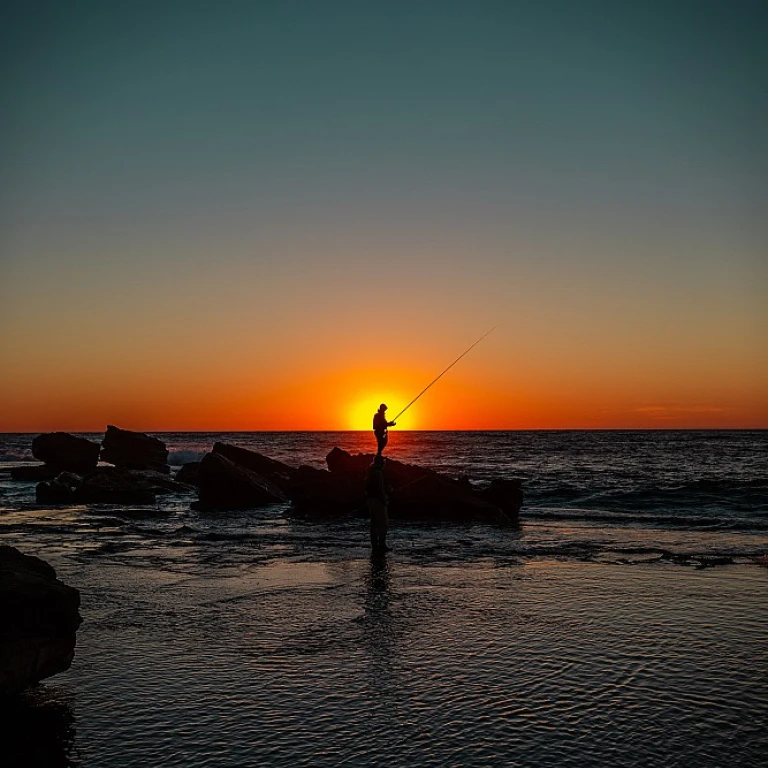
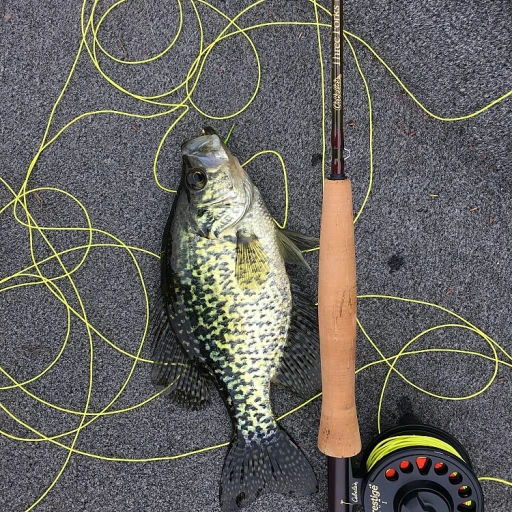
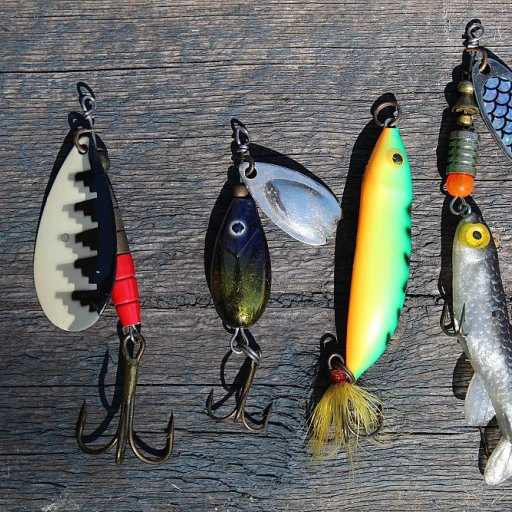
-large-teaser.webp)
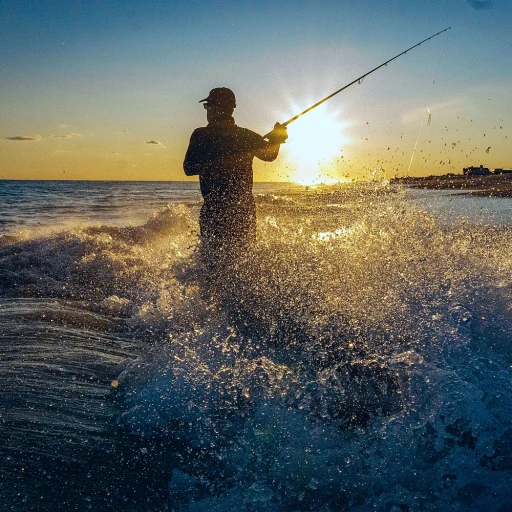

-large-teaser.webp)
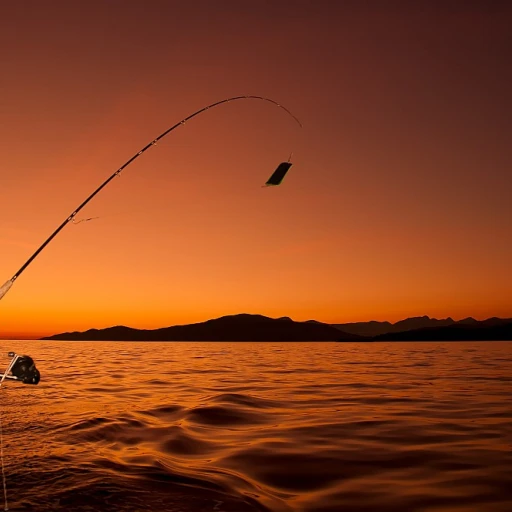
-large-teaser.webp)
-large-teaser.webp)
